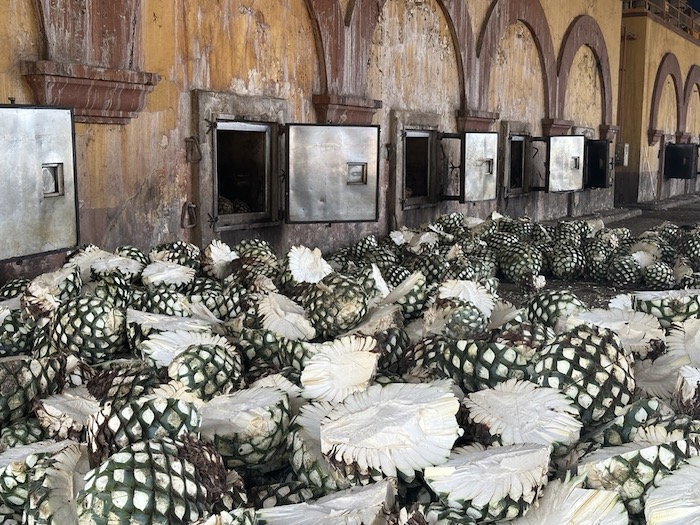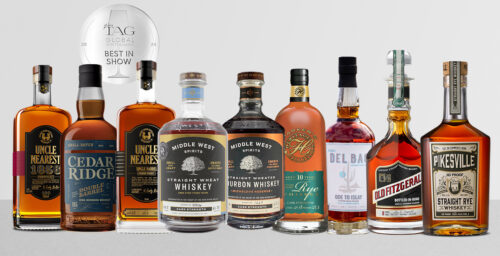If you want to be proud of American whiskey standards, just look to Mexico, the exclusive home of tequila. Compared to stringent rules here, regulations are a bit loose and arguably loco there.
They start off great: The only material allowed for tequila production is the blue Weber agave. This huge, slow-growing plant takes five to 10 years to grow to maturity before harvesting.
The spirit’s regulating body, the Consejo Regulador del Tequila (CRT) is essentially Mexico’s TTB, and like the America’s governing body, it’s strict in some areas such as aging. For example, once tequila enters into the barrel to become a reposado (2 months to 364 days) or an anejo (1-2 years), an adhesive strip is taped over the bung. When that strip is torn and the bung is removed, that’s the age of that tequila. No removing the bung to thieve a barrel and gauge the spirit for readiness; no drilling and pegging it through the barrel head as distillers do here. You taste it and the clock stops.

But that’s largely where the CRT’s strictness ends. Unlike in American whiskey, where the only additive allowed is water, tequila makers can swirl in other additives—abocantes in Spanish—that affect its taste, texture and color. According to Grover and Scarlet Sanschagrin, owners of Tequila Matchmaker, as much as 70 percent of all tequila made contains additives such as glycerin (for mouthfeel), sweeteners, a.k.a. jarabe (corn syrup, agave nectar, aspartame, sucralose, among others), oak extract (for tannin and aroma) and caramel color (for faux aging, as some Scotch makers do).
Any additive or combination of additives can only amount to 1 percent of the finished product’s volume, and at that legal amount, distilleries don’t have to report their use. But modern additives are so potent and impactful on the spirit that it’s hard to deny their use.
So why are additives used? Because it’s easier and less expensive to make a low-quality distillate and manipulate its flavor with additives than it is to make tequila the right way.
Like anything, the right way is usually the slow way. A good rule of thumb is the older the agave, the better the tequila. Delaying harvest means delaying profits, but it also means promoting flavor as the inulin content within the plant increases over time. (Inulin is the complex carbohydrate converted to sucrose through cooking the pina, the heart of the agave plant.)
The fastest, most efficient but least desirable process centers uses a massive machine called an extractor, which relies on water jets and acid hydrolysis to get the inulin. That watery solution is then heated to convert the inulin to sucrose for fermentation. The result is low-quality tequila that requires additives to make it drinkable.
Agave is best cooked and cooled slowly in a steam-jacketed stone oven (an horno) over three to four days. The nectar created in that process has more complex, intriguing and tasty flavors that also express the plant’s terroir. That nectar (mosto fresco) is then pot distilled twice, and when done right, still strength tequila—unlike bourbon off the still—is ready to sip and friggin’ amazing. (Tequila Fortaleza’s Still Strength release is a mere 92 proof, while others range between 100 and 110.)
Barrel aging (nearly always with used cooperage from the U.S.) is challenging in Mexico, where the hot and dry weather boosts angel’s share dramatically. Aging in a way that magnifies tequila’s natural qualities naturally takes time and patience. But many skip such tedium with additives.
Many drinkers familiar with the flavor of pure, well-wrought agave can spot sweeteners on nose. Some smell of cake batter and vanilla, others of coconut aromas more reminiscent of tanning oil. That wonderful cotton candy note found in older whiskeys is often a powerful aroma in additive-laden tequila.
Here’s one way to spot the use of oak extract and caramel coloring additives. Tequila distillers traditionally use barrels over and over and without retiring them until they leak. (One barrel I saw recently at Cascahuin distillery in El Arenal, Jalisco, Mexico was 35 years old and still in use!) The barrels used for Tequila Ocho’s anejo releases are so old that the end product is straw colored even after all that time. But because maestro tequilera Carlos Camarena uses those oak casks for oxidization and esterification, color and tannin aren’t important, so there’s no need to color them with additives.
So, knowing that barrels are like tea bags and lose the wood’s impact over time, it makes it easy to suspect caramel coloring is present in a shorter-aged tequila reposado that’s as amber as a 2-year-old bourbon from new cooperage. Oh, and that mouthfeel with no real flavor that you find in that same reposado is likely from added glycerin.
But since this is The Whiskey Wash, and we talk about our love of whiskey, I’ll bring it all back to that. Were tricks like this going on in American whiskey, the shrieking across the land would be ear splitting. There’d be torch-and-pitchfork protests over such heresy, and I’d support them. Modern drinkers are incredibly fortunate to have not suffered the ills of the badly rectified bourbon and rye of yore. Our stuff is great, and I’m happy to live in this golden age of American whiskey.
But don’t get me wrong: I’m not bashing tequila. I love and buy that which is well made by distillers who stick to correct and historic practices. Believe me, the 30 percent of tequila that the Sanschagrins believe is additive free represents a range of brands my liver couldn’t tolerate investigating to the end.
So, if you drink a wide range of spirits like I do, don’t sidestep tequila. But buy it using the same scrutiny you’d apply to American whiskey. The good news is the good stuff—also like bourbon and rye—isn’t the most expensive, terribly hard to find or “created” by a celebrity.







